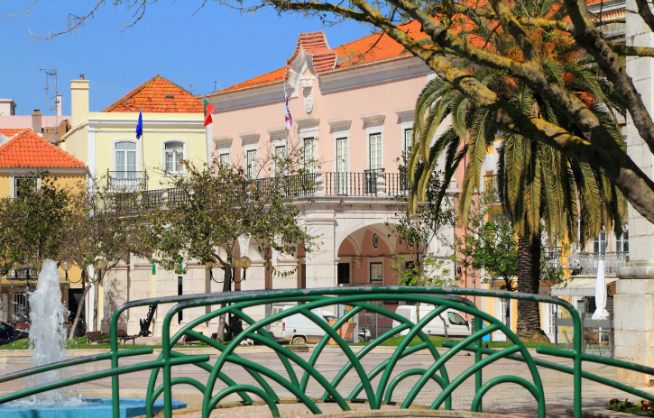Buy House in Setúbal

Want to buy a house in Setúbal? Have you visited our beautiful town and fell in love with it? We want to help you find the perfect house! Let us know exactly what you want and we will find it for you! The best part is that the service is completely free and you won't be obliged to buy or rent any of the properties we present you with!
Why Move to Setúbal?
Nestled within the heart of Portugal, Setúbal emerges as a city unlike any other, an enchanting tapestry woven from a rich tapestry of history and a remarkable natural beauty that captivates the soul. This picturesque haven's roots can be traced back to the mists of ancient times, where local legends whisper tales of its founding by a relative of Noah, connecting it to the very cradle of civilization.
Setúbal's profound affinity with the sea weaves a narrative that spans the ages. Dating back to the 1st century AD, a thriving fish salting industry laid its foundation. The town boasts the third-largest protected harbor in all of Portugal, a maritime gateway that has witnessed countless historic journeys. In 1458, it was from these very shores that King Alfonso V embarked on a legendary expedition to conquer Alcacer Ceguera in Morocco, a testament to Setúbal's role during the era of the Discoveries.
Modern Setúbal proudly wears the mantle of the Portuguese sardine capital, its shores teeming with the bustling activity of the fishing industry. But it's not just sardines that put Setúbal on the map; it's also renowned for its sweet and globally acclaimed Moscatel wine. As you stroll through the town's winding streets, you'll encounter elegant fountains and manicured gardens, creating an atmosphere that resonates with a certain old-world charm.
Situated at the mouth of the Sado River, Setúbal enjoys a unique geographical advantage. Sheltered from the tempestuous Atlantic Ocean by the Troia Peninsula, the city basks in the protection of its natural surroundings. Beneath the sandy shores, the remnants of the ancient Roman town of Cetobriga lie hidden, a once-prosperous fishing and fish-salting center that met its end with a catastrophic earthquake and tidal wave in the 5th century. In recent times, the secrets of Cetobriga have been unearthed, offering visitors a chance to explore its historical treasures.
The Troia Peninsula, just a stone's throw away, now serves as a sprawling tourist complex with pristine beaches, a variety of accommodations, and an array of activities for those seeking leisure. It's a place where the past harmonizes with the present, a blend of history and contemporary relaxation.
Setúbal's historical tapestry is further embellished by the 15th-century Mosteiro de Jesus (Monastery of Jesus). Adorned with maritime-themed stonework in the distinctive Manueline style, this monastery is said to have been founded by the nurse of King Alfonso V. The complex that surrounds it houses an impressive collection of 16th-century paintings, solidifying its place as one of Portugal's most cherished repositories of religious artwork. It's a tribute not just to the city's history but also to Bocage, one of Portugal's esteemed poets and a native of Setúbal.
For aficionados of Portuguese azulejos, the Fort of São Filipe, perched regally on a hill overlooking the city, is a treasure trove. Within its chapel, tiled dados tell the story of its patron saint, Felipe, and the Virgin Mary, a masterpiece crafted by the renowned tile-maker Policarpo de Oliveira Bernardes in the 1700s. Originally built as a star-shaped fortification by the Spanish King Filipe II in the 16th century, it now stands transformed into a luxurious pousada (historic hotel), replete with 16th-century antique furniture and breathtaking views of the bay.
The natural reserve enveloping the Sado River estuary unveils a world of wetland wonders. Migratory birds grace the skies, unique fish species thrive in its waters, and the agricultural and natural landscapes paint a vivid picture of ecological harmony.
In recent years, the stretch of coast between Setúbal and the capital city has seen a blossoming of high-quality golf courses. The Aroeira Golf Course, designed by Pennink in the 1970s, has risen to become one of Portugal's most celebrated examples. It's not just a golf course; it's a pristine green oasis, a testament to the harmonious relationship between nature and human endeavor.
Setúbal beckons to those who seek a place where tradition intertwines with modernity, where culinary delights and cultural treasures converge. Its allure resides not only in the pages of history but in its promising future as a haven of unparalleled beauty, where the past and the future dance in perfect harmony.

